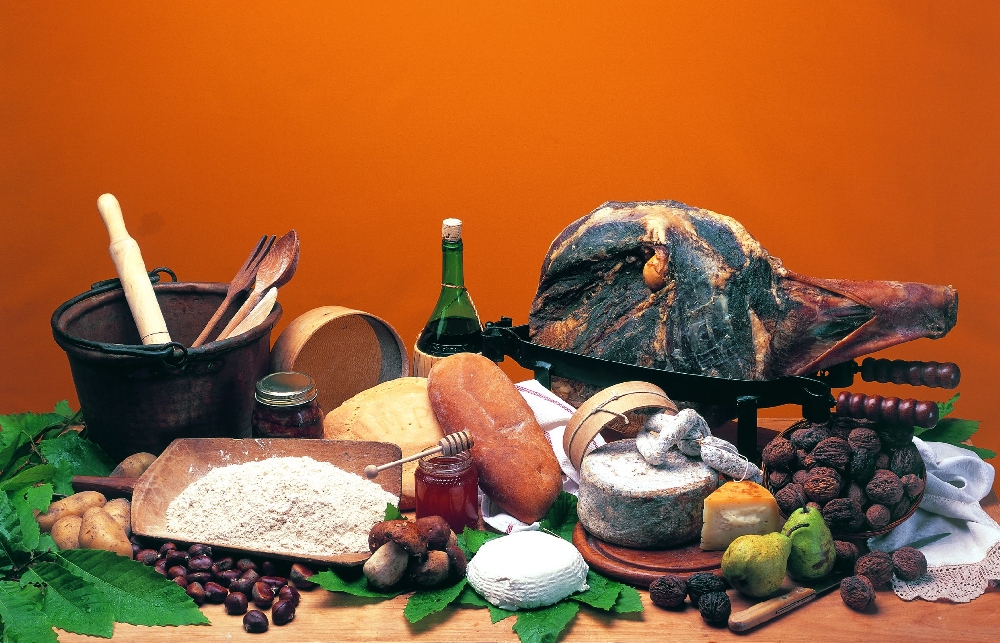Located just an hour’s drive southeast of Florence, Casentino is a precious little gem of Tuscany just waiting to be explored. You will find a little bit of everything here: just think of vineyards, olive groves, forests, handmade pasta, history and medieval castles. I’m not talking about fairy tale castles like Cinderella’s, but real towers with drawbridges. This is where I would like to take you in my next articles, to make you dive into the history, traditions and folklore of Casentino and its castles. Before we jump from one castle to another together, I would like to share with you some information that might help you complete the overall picture of Casentino. Let’s start with a bit of history. Long before the Romans conquered this valley, there were Etruscans, who left clear signs of their passage. Although they were a people with a great culture, in terms of written legacies there is very little left, with the exception of funerary inscriptions and city names. In fact, many of the towns whose names end in -ena or -ana (Romena, Subbiano, Porciano) date back to ancient Etruscan possessions. But if we go further back in time, before the Etruscans arrived, this valley was a prehistoric lake, signs of which can be traced in fossils found on rocks and sediments. In any case, if prehistoric remains are not your thing, there are many other ways through which this valley left its mark on Florence. Just watch carefully the swirling currents of the Arno River as you cross Ponte Vecchio and you will see a piece of Casentino floating right in front of you. This river, which originates on Mount Falterona above Stia, flows southward for about 40 kilometers (barely touching the city of Arezzo) before abruptly reversing course heading toward Florence. The people of Florence, who still hold a deep grudge against the city of Arezzo, like to think that the river voluntarily bypassed the city, preferring to go toward Florence. And although it is physically closer to Arezzo, you could draw a line along Poppi’s borders and you would see a clear loyalty to Florence. The relevant diocese is that of Florence, the dialect has a tending Florentine accent, and the traditions, cuisine and popular folklore also honor the city of Florence. And all this just because of a couple of battles lost during the 1300s and 1400s…Imagine that!!! It is not only the Arno that has left its mark. If you look at Brunelleschi’s dome of Florence Cathedral, you will see not only an architectural masterpiece, but also the wood harvested in the Casentino forests by the Camaldoli monks, who in fact came down the Arno River. Or if you seek refreshment in the shadow of the Palazzo Vecchio, you will do so under a replica of Poppi Castle (on a much smaller scale of course). Or if you admire Taddei Gappi’s fresco in Santa Croce, you will be admiring the work of an artist who first honored the land of Casentino. Even Michelangelo came from the hills above the Casentino valley. Therefore, no doubt remains that this land holds a lot of history. If you find yourself traveling around Italy, wherever you go, it is always best to get an idea of the places you will visit, both from a geographical and gastronomic point of view. This part of Tuscany is well known for its grilled meats, handmade pasta, porcini mushrooms, chestnuts, and schiacciata. In particular, potato tortelli are a fairly common dish in these parts: they are like spinach ravioli but with an exquisite potato filling. Porcini mushrooms are considered the pride of Casentino, and during harvest season, local people compete to keep the places where they grow and hide in the woods a secret. Pecorino cheese, Tuscan or general Italian cured meats and schiacciata (sometimes also called focaccia) are a MUST try. In any case, it is difficult to stumble upon a bad restaurant in Casentino, as they are still much more frequented by Italians than tourists, so you will find genuine dishes and authentic flavors

